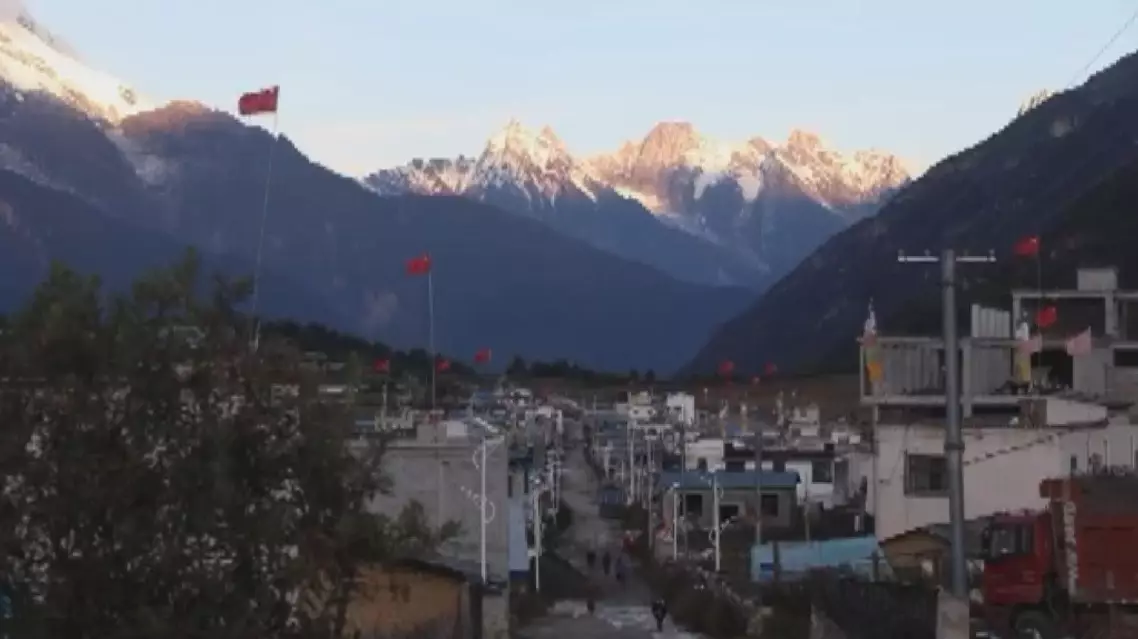Benefiting from various favorable national policies, Gyirong, a charming Chinese town nestling in an area bordering Nepal, has witnessed rapid growth in cross-border trade and tourism, boosting local residents' income.
It is about 820 km west of Lhasa, capital of southwest China's Xizang Autonomous Region, and lies about 131 km from the Nepalese capital Kathmandu.
The Himalayas have cut open five north-south rift valleys in Xigaze under Xizang. The valley where Gyirong is located is the westernmost and longest of them all, stretching approximately 93 km.
The valley has served as a crucial transportation route between the hinterland of the Qinghai-Xizang Plateau and South Asia. Historically, it has functioned as a combination of an "official road" and a "commercial road."
In addition to its long history, the small town has undergone significant changes in the new era. Today, a land port has been built on the ancient commercial site.
In 1961, Gyirong port attained approval for opening. It was declared a second-class land port in 1972 and was upgraded to a national first-class land port in 1987. Thanks to the Belt and Road Initiative, the volume of border trade at the Gyirong port has steadily grown. In 2017, the port was designated as an international port, thereby allowing access to individuals from third countries besides China and Nepal.
During the week-long National Day holiday which started on Tuesday, the inbound and outbound passengers at the Gyirong port have significantly increased, with a noticeable rise in cross-border trade among border residents.
Dawa Phuntsog, who has been working at the Gyirong port for eight years, has noticed a significant surge in workload over the past two years.
"One aspect is that the volume of business has increased, and the other is that the personnel structure has become more diverse. Previously, it was only the border residents, and travelers from Nepal and other regions of China. After becoming an international port, there are more people from third countries besides China and Nepal. In terms of trade volume, there used to be mainly general merchandise. However, recently, with the export of new energy vehicles, highland drinking water, and some agricultural and sideline products, I think the variety has become more diverse," he said.
After graduating from her university, Nangsa chose to return to her hometown. She started by promoting her hometown through short videos on social platforms and then progressed to selling Nepalese products. As the pioneer of livestreaming e-commerce in Gyirong, she has transitioned the fervor of Sino-Nepalese border trade from offline to online. The source of income for villagers is becoming increasingly diversified.
Nangsa said that Xizang is a microcosm of China's achievements in construction and development, as well as a comprehensive window of Chinese modernization.
"Look at the development in Gyirong now, it's a microcosm of the country's opening up. I believe all of this signifies a more open, confident, and inclusive China," she said.
From January to August this year, the total import and export value in Xizang exceeded 7 billion yuan (about 1 billion U.S. dollars), with the Gyirong port surpassing 2.5 billion yuan (about 0.36 billion U.S. dollars).

Border town in Xizang sees rapid growth in cross-border trade, tourism under favorable national policies









